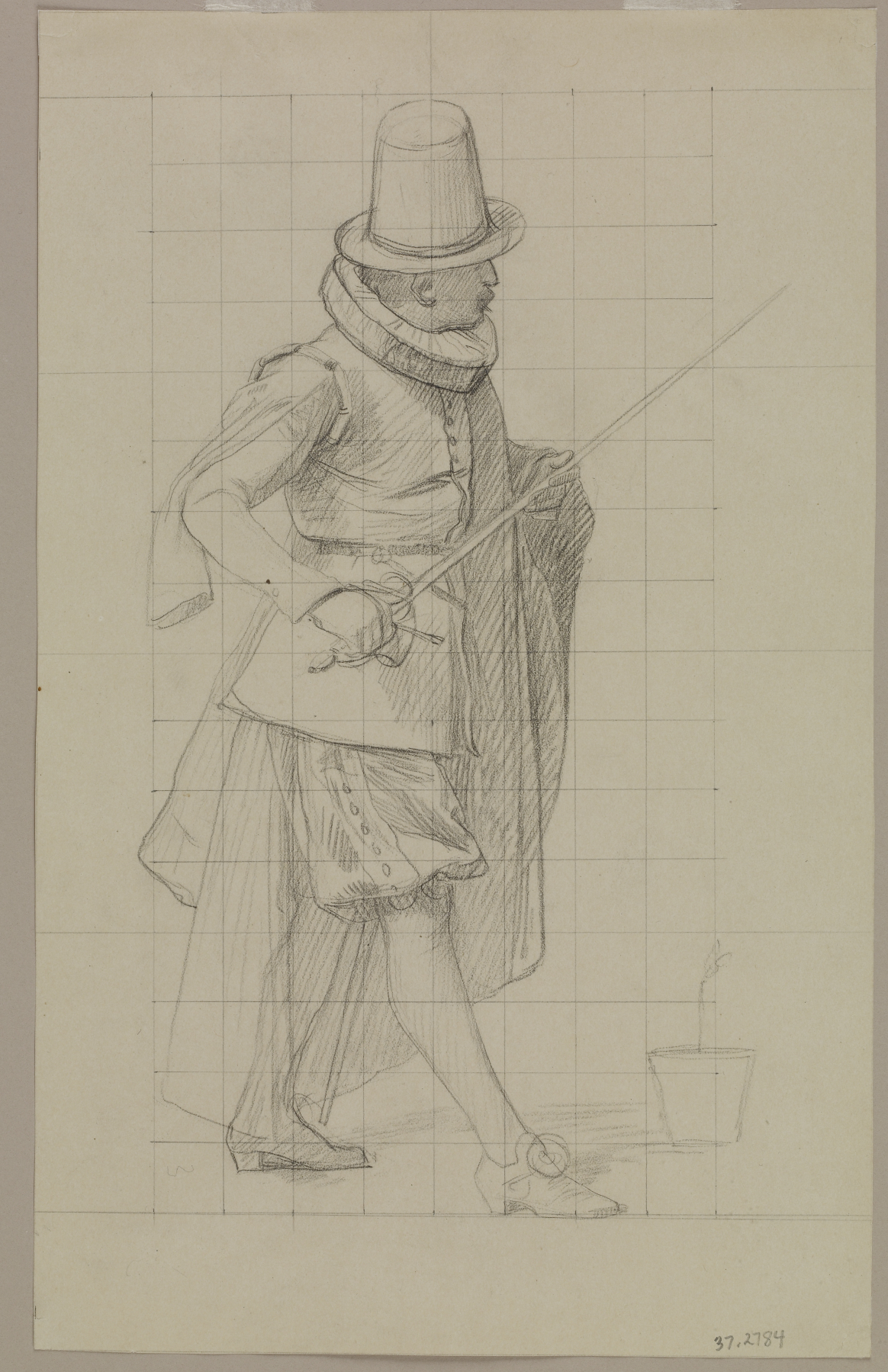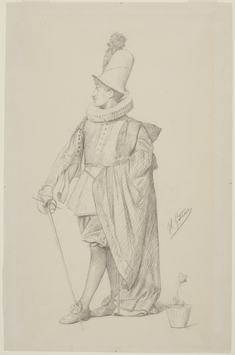Study for "The Tulip Folly"
(18th and 19th Centuries )
This drawing is related to a painting showing an incident during the "tulipomania" in Holland in the 1630s, when speculators drove the price of tulips to unprecedented heights, only to have the market suddenly collapse. To control the supply, the government ordered the destruction of the tulip beds. Here, a Dutch aristocrat defends his prize tulip from the government soldiers. The painting, "The Tulip Folly" (1882, Walters 37.2612), has been in the Walters since 1983.
Gérôme frequently sold drawings that either replicated his most famous works or were variations on them. In this instance, the drawing has been squared to transfer the design, confirming that it is a preliminary study rather than a replica.
Provenance
Provenance (from the French provenir, 'to come from/forth') is the chronology of the ownership, custody, or location of a historical object. Learn more about provenance at the Walters.
Aimé Morot [the artist's son-in-law], Paris [date and mode of acquisition unknown] [the drawing was once part of a notebook in his possession, later dismembered]; Dr. Edward T. Wilson, Bethesda, Maryland [date and mode of acquisition unknown]; Walters Art Museum, 2008, by gift.
Exhibitions
| 2024-2025 | Reinstallation 2024: Art and Process. The Walters Art Museum, Baltimore. |
| 2010 | Expanding Horizons: Recent Additions to the Drawings Collection. The Walters Art Museum, Baltimore. |
Conservation
| Date | Description | Narrative |
|---|---|---|
| 1/1/2002 | Treatment | examined for exhibition; other |
Geographies
France, Paris (Place of Origin)
Measurements
H: 12 11/16 x W: 7 7/8 in. (32.2 x 20 cm)
Credit Line
Gift of Dr. Edward T. Wilson, in honor of William R. Johnston, 2008
Location in Museum
Not on view
Accession Number
In libraries, galleries, museums, and archives, an accession number is a unique identifier assigned to each object in the collection.
In libraries, galleries, museums, and archives, an accession number is a unique identifier assigned to each object in the collection.
37.2784








